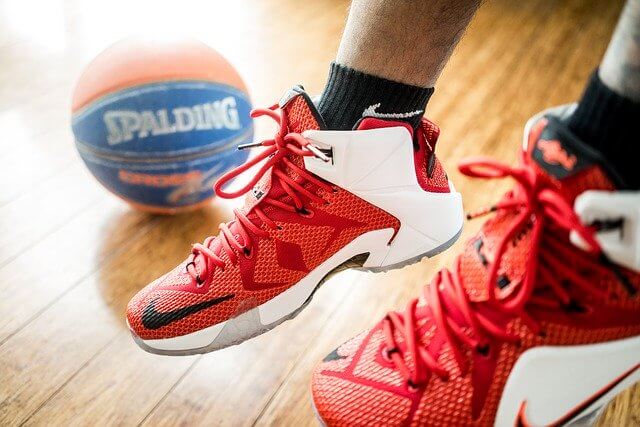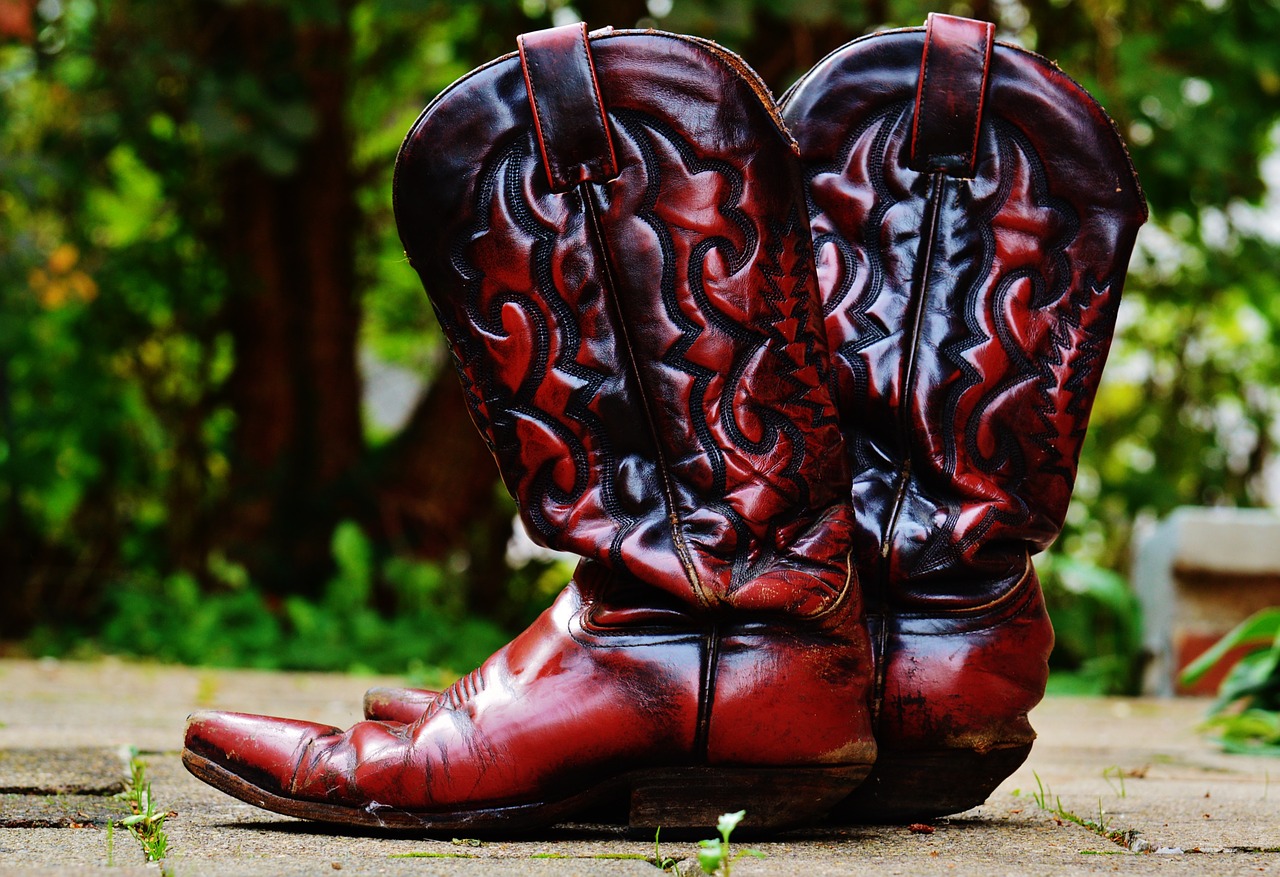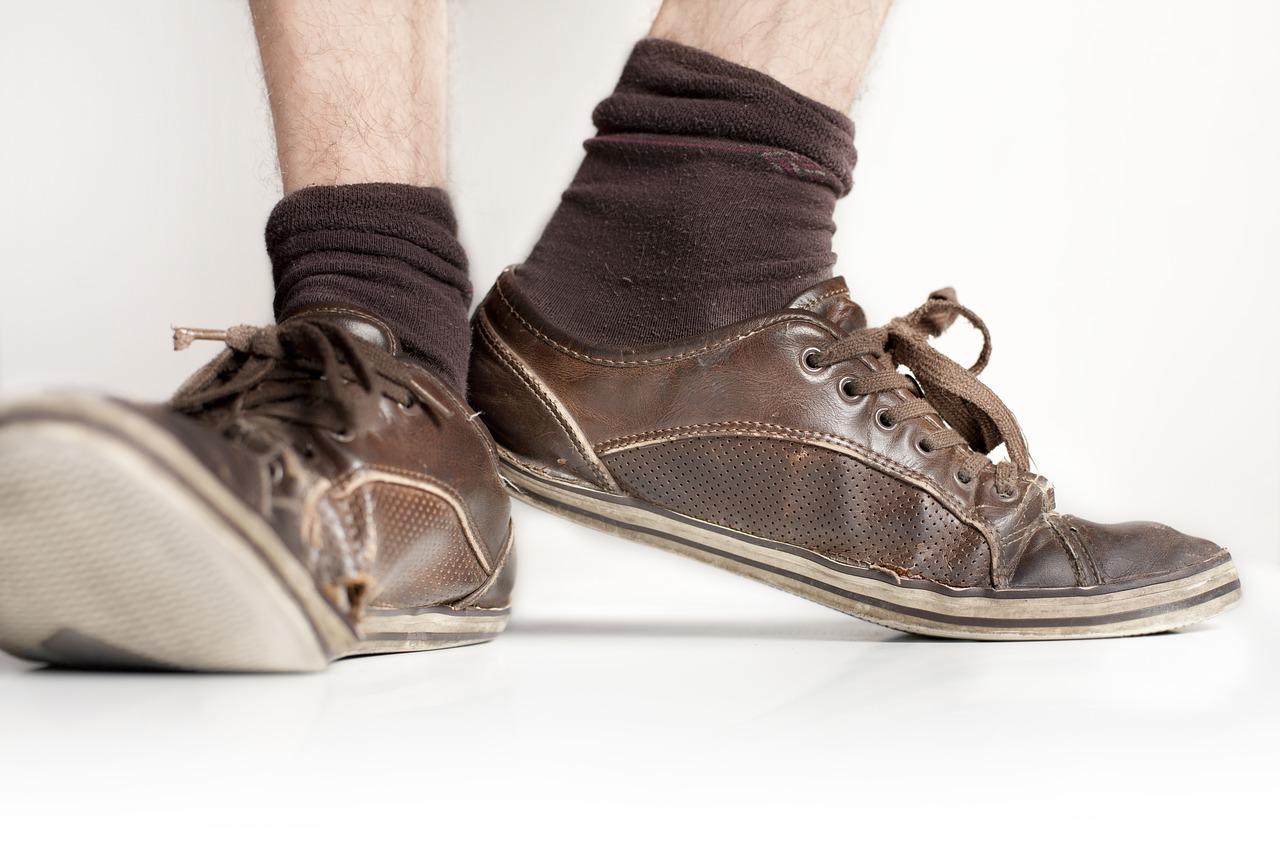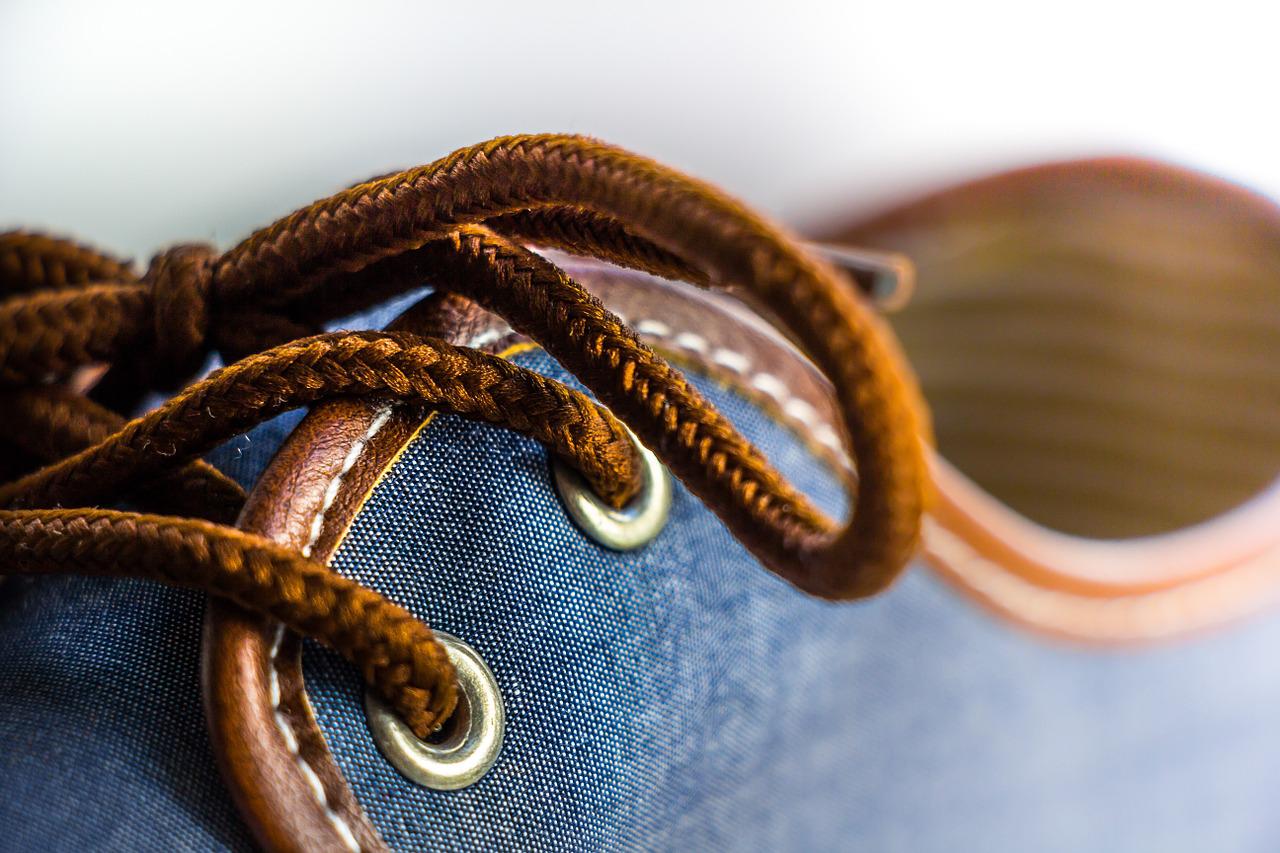What is shoe? What is the development of shoe? Information about the history of shoe from early years till now.
SHOE, a form of footgear that covers the foot up to the ankle and that is intended as a protection from cold, dampness, or rough terrain. In addition to shoes, other basic types of footgear are sandals, moccasins, boots, slippers, and mules.
The sandal has a flat sole of leather or wood fastened to the foot by straps, thongs, or a knob between the toes. The moccasin is distinguished by a sole that extends up around the foot to form some part or all of the upper section of the shoe. This is a primitive form of footgear that is still worn by hunters because of its flexibility and because it gives greater protection against dampness than shoes with a seam between the sole and the uppers. The boot consists of a sole and an upper part that extends above the ankle to protect the leg from cold, wetness, or dangerous conditions, such as snakebite or thorny plants. The slipper is a soft shoe, often intended for indoor wear, with uppers generally made of fabric and sometimes lined for winter wear with wool or fur. Mules are slippers that consist of a sole and an upper that covers only the toes.

HISTORY.
Until the age of cheap mass production, shoes were generally considered a mark of rank or prestige. Common men walked barefoot, and their feet became calloused, helping them to escape much of the discomfort that would result from not wearing shoes. The nobility, on the other hand, felt obliged to wear shoes as a proof of gentility, that they could not bear roughness or dirt. In China, in order to indicate their incapacity for physical work, upper-class parents bound their daughters’ feet to prevent normal growth and to produce a small, twisted “lily foot.” As a result, wealthy Chinese women could scarcely walk in their tiny shoes.
Early Shoes.
Shoes were unnecesary in warm climates. In ancient Egyptian wall paintings only kings and priests are shown wearing sandals, made of plaited reeds or, as in the case of Tutankhamen, of finely tooled leather. People in cooler climates wore shoes much earlier. Egyptian wall paintings at Beni Hassan ( 2000 b. c. ) and at Thebes ( 1450 b. c. ) depict Syrians, and Minoans from Crete, wearing an assortment of elaborate sandals and boots. The meticulous art of the Assyrians has left us detailed designs of their elaborate and sophisticated sandals on the reliefs from Calah (modern Nimrud) and Nineveh (about 800 b. c.).
Ankle-high boots with turned-up toes were characteristic of the Hittite culture, and it has been suggested that the Etruscans may have come from the same stock because figures in Etruscan tomb paintings of a much later date wear identical boots. This curious design of turned-up, pointed toes, perhaps originally a symbol of the horn of the moon, has persisted in all the Muslim countries of the Middle East.
Classical Shoes.
Greek sandals were developed from those of earlier Middle Eastern peoples, with many individual designs of straps over the instep and intricate lacing up the leg. To prevent the laces from slipping down, the heel piece was often extended for several inches up the back of the leg and was provided with eyelets through which the laces were passed after being twisted around the leg. Robert Graves writes in The Greek Myths that Greek warriors wore only one sandal—on the left foot, their shield side—because that foot was advanced during a hand-to-hand struggle and could be used for kicking an enemy in the groin. Thus the left was the hostile foot and was never set first on the threshold of a friend’s house. The custom survives among modern soldiers, who begin marching with the left foot foremost.
Greek women appear to have worn buskins, soft boots that came up above the ankle. Greek vase paintings show women at their toilet holding such footgear. Further evidence that buskins were worn especially by women is provided by an Attic vase on which male actors, impersonating women, are shown putting on these soft boots.
The Romans wore more ornate sandals than the Greeks, with the uppers covering a great deal of the foot but still leaving the toes bare. They also wore the calceus, a shoe that covered the foot to the ankle like a modern shoe, and buskins that reached halfway up the calf. Roman senators wore black buskins with a crescent-shaped clasp of ivory or silver on the instep. Buskins were often open up the front, laced across, and lined with tire skins of small animals, the heads and claws of which were allowed to hang down over the tops as ornament. Roman soldiers derived their title caligati from their strong sandals, or boots, called caliga, which were often studded with nails.

Source : pixabay.com
Early Medieval Shoes.
In the less advanced cultures of northern Europe, people wore hose fitted with feet, like babies’ leggings, as protection from cold and moisture. Over these they wore oblong pieces of leather bound to the feet by leather thongs. The thongs, laced through punched holes, two in the front and one at the back, drew up the corners of the leather sole over the toes and behind the heel. The thongs were then crisscrossed up the leg, over the baggy hose, in the fashion typical of the Anglo-Saxons, Gauls, Goths, or Franks.
In the cultural centers of the early Christian world, the craft of shoemaking became highly developed and important in the 4th century. Beautifully decorated shoes and boots can be seen in Byzantine and other early manuscripts and in contemporary statues, where the details of soles, uppers, and fastenings of shoes are clearly indicated. These early shoes generally covered the foot and were laced over a slit at the ankle that provided room for the foot to enter easily.
The Normans introduced into England neat ankle boots with contrasting bands around the tops. Robert, the eldest son of William the Conqueror, was nicknamed Curta Ocrea, meaning “short boot,” but it is not known if this was because he originated the style or because he continued to wear such boots long after they had gone out of fashion. The most usual footwear in the 11th and 12th centuries was the closed shoe of soft leather or cloth, with a pointed toe that gradually lengthened as the elongated Gothic style became predominant in northern Europe.
14th and 15th Century Shoes.
Boots, sometimes pulled over the knees, were first worn in the 14th century as a protection for the legs when riding horseback and continued in fashion through several centuries. The boots had no fastenings, and their loose tops were either turned over into cuffs or allowed to fall in creases, according to the stiffness of the material used.
From the end of the 14th century and all through the 15th, as headdresses and hats rose into points on the head, the toes of shoes also became more and more elongated to balance the design. The shoes of princes had toes that extended 24 inches (60 cm) beyond the foot, stuffed with fiber or straw to keep them in shape. These shoes were called poulaines or crakows, suggesting that the fashion may have originated in Poland. As these long points became inconvenient, they were sometimes tied up to the knees with chains. But the frequency of accidents caused by this exaggerated fashion and the mincing walk assumed by his nobles caused Edward IV, a man not given to fripperies, to enforce a sumptuary law restricting the length of the toe to 2 inches (5 cm).
During the 14th and the 15th centuries shoes were often made of such delicate materials that cloglike overshoes, called pattens, were introduced for outdoor wear. They were made of iron, wood, or even cork (for kings), and their toes and heels were thickened or fitted with pegs to lift the sole above wetness and dirt. The pattens, held on the foot by straps over the instep, could be easily slipped off by the wearer before he entered the house. Similar to pattens were chopines, high platforms, to which shoes or mules were permanently attached. In the 16th century, chopines became very high, like stilts. Hamlet addressing one of the Players, says: “Your ladyship is nearer to heaven than when I saw you last, by the altitude of a cho-pine.”

Source : pixabay.com
16th Century Shoes.
A complete reversal of styles, from the pointed Gothic to the blunted German fashion, took place in the early 16th century. The toes of shoes were squared to match the wide costumes familiar to us from portraits by Holbein. Made of soft, embossed Italian leather, velvet, or cloth, the square toes were rolled over and back and often slashed to allow contrasting material to puff through the slits. In contrast to previous fashions, the uppers were very low cut and barely covered the toes and the .backs of the heels, leaving the instep bare and giving the impression of a people stricken with die painful complaint of hammertoe. Again the law stepped in, this time restricting the width of shoes instead of their length.
By 1550 shoes had acquired a more natural shape, with toes more pointed, and had uppers that were higher over the instep, with the front often rising to a point. The sides, cut low to ease the foot into the shoes, evolved a little later into straps that were fastened with a buckle or a ribbon bow over the high front.
Heels had first been put on shoes by the 1590’s. Perhaps they were introduced by Queen Elizabeth I of England, who wished to increase her small stature. Heels immediately became high fashion, and the bows or rosettes that decorated the straps or toes became more and more pronounced. It has been said that the people of medieval and Elizabethan England were better shod than those of other nations because the enormous amount of meat they consumed made leather more readily available and cheaper than in other countries of Europe.
17th Century Shoes.
The mid-17th century saw the gradual squaring of the toe again, this time without a puff. Shoes had firm leather soles and heels, and the uppers extended over the instep, with a tongue or flap over which the side pieces fastened with a square buckle. These buckles grew larger, the tongues longer, and the heels higher as the century advanced. Enormous bows gradually replaced the buckles. In 1660, Louis XIV of France was presented with a pair ff shoes with bows 16 inches (40 cm) across and with high red heels. Such shoes delighted the King and his court so much that the fashionable male world continued to totter on high heels and trip over wide bows for another 10 years. The high heels worn by Louis to enhance his rather meager height were curved, making them less clumsy looking than a straight heel. (A high curved heel is still called a Louis heel.)
The 17th century was also the era of the boot. Continental wars in the early part of the century made the boot the most practical footwear for men. In the swashbuckling period of The Three Musketeers, boot tops were widened, and loose stockings were festooned above them —a detail eventually so exaggerated that it produced the astonishing effect of manly figures in petticoat breeches with lace frills around their knees falling into wide boot tops.
18th Century Shoes.
The end of the 17th century and the early 18th century (another period of war) saw the rise to popularity of the heaviest boot yet made. The jackboot (so called because a metal frame, or jack, held the leather tops from slipping down or creasing) had bucket tops and spurs carried on wide flaps over the instep. These boots were sometimes called Ra-millies boots, after the Battle of Bamillies in the War of the Spanish Succession. Wide flaps covered the knees in some styles, but the leather behind the knee was cut away so that the knee could bend. Because long boots were expensive, the common soldier was given a cheaper imitation in the form of long gaiters, made of canvas coated with pipe clay, which covered the tops of his ankle boots and buttoned up the sides to well above the knees.
Shoemaking in die 18th century reached a peak of daintiness for formal wear with the use of brocades or soft kid, either embroidered or sewn with spangles. Shoes had pointed toes and high curved heels and were often ornamented with a diamond buckle over the tongue. Matching pattens were usually made with a thicker sole to prevent the delicate shoe fabric from becoming soiled. Women’s shoes became more important as skirts were shortened in the 1780’s. However, some Englishmen, countrymen at heart, would wear their riding boots on every occasion unless forcibly refused admittance.
19th and 20th Century Shoes.
The Napoleonic Wars again made boots essential for men. On the British side, the famous Wellington boot, named after the general, was merely a long-fronted riding boot that became the fashionable wear for all officers. The French, Austrians, Poles, and Germans wore a shorter boot, with a scalloped front from which hung a tassel; it was worn with tight, braid-decorated breeches patterned after the romantic uniform of the Hessian hussars.
As breeches lengthened into trousers during the early 19th century, flat pumps often replaced boots for men, although sometimes the trousers were drawn down over the boot and strapped under the foot in a fashion that lasted for many years. In the epoch of prudery that occurred in the 19th century, women s feet suffered an eclipse under long skirts. Their shoes during this period remained unchanged in shape, resembling blunt-toed dancing shoes, until the 1860’s when, for a short period of emancipation, little ankle boots were allowed to show under shortened crinolines.
It is usually assumed that the practice of making right and left feet in footwear began in the 19th century. However, this comfortable fashion was not unknown in classical and medieval times, but it is curious that it did not become a general practice sooner.
Mass production of shoes began in the mid-19th century and, with the clothing industry in general, was responsible for one of the worst forms of sweatshop labor. But mass production also enabled the poor to be better shod—many having been shoeless previously.
Ankle boots, laced up the front or with elastic gussets in the sides, continued to be worn by men through the late 19th century and until World War I. Men’s clothes then became more youthful in appearance, partly as a result of the smart uniforms worn during the war. From that time on, oxfords, laced up the instep over a tongue and with or without toe caps, have been a universal fashion, in calf for day wear and in patent leather for the evening.
Women’s shoes in the late 19th and early 20th centuries continued to have heels, usually of the low, curved Louis shape. They became more fancy as skirts were slightly shortened or held up to show the feet. High laced or buttoned boots were worn in winter and outdoors. Such boots with light kid uppers and patent leather vamps were fashionable with the slit hobble skirt about 1912. The much shorter skirts of the 1930’s emphasized stockings and shoes, which became higher-heeled and single-strapped. Finally they developed into the court shoe, or opera pump, which has become a classic. Wedge soles—copied from the Chinese shoe in which the sole and heel are all one piece enabling the heel to be high but more stable—were introduced during World War II. The platform shoe, with a very thick sole and high, thick heel, was introduced in 1947.
The most disastrous fashion for both sexes was the narrow, pointed shoe that became the rage in the 1950 s. When allied, in women’s shoes, to the high “pin,” or “spike” heel of wood around a metal rod, they spelled ruin for ankles, toes, and floors. But, with the usual persistence of a fashion that is much criticized on rational grounds, the style lasted several years before being replaced by its opposite—square toes and thick, medium-high heels. In men’s shoes, casual attitudes toward grooming made suede shoes with crepe-rubber soles popular, in the mistaken theory that suede needs less care than shiny leather. Slip-on shoes began to replace the classic oxford. Both men and women wore sandals and Swedish clogs with contour-fitted soles.
During the 20th century different kinds of shoes have been carefully designed to serve specific needs. There were special shoes for sports —track, golf, cricket, football, tennis, rock-climbing, mountaineering—and for occupations—mining, diving, and firefighting. Many shoes, fashionable or utilitarian, were made of synthetic materials.
Customs and Folklore.
Shoes have figured prominently in Eastern religious observances. Orthodox Jews, Muslims, and Hindus all remove their shoes before entering the holy places of their faith. The custom probably originated as a gesture of humility when shoes were so rare as to be considered a mark of dignity and the shoeless foot a sign of servitude.
Throwing a shoe at the bridal pair and tying shoes to the bridal car at weddings are relics of an ancient custom. The bride’s parents once gave her shoes to the bridegroom as a sign that shet had left their home forever and that he assumed dominion over her after the wedding.

Source : pixabay.com
Shoemakers have their own tutelary saint in Saint Crispin (martyred in 287), and through him their trade is called the “Gentle Craft.” Crispin was a Christian missionary who practiced the trade of shoemaking by night and preached the Gospel by day. An angel, it is said, miraculously provided leather so that his shoes could be bought cheaply by the poor.
The psychological importance of shoes is apparent from their central place in many fairy tales and in folklore. Cinderella, the downtrodden, is singled out for fame and fortune through a tiny glass slipper into which only her foot would fit. In the 17th century, when the fashion for boots was at its peak, magic boots figure prominently in such tales as Puss in Boots and Jack the Giant-Killer. In The Twelve Dancing Princesses, the princesses’ shoes are mysteriously worn out every morning—a symbol of rebellion against a tyrannical father. An old tale retold by the brothers Grimm, the story expresses the girls’ wish to transfer their duty to the 12 handsome suitors who danced with them secretly through the night. Shoes are a good-luck symbol in the rather pious History of Little Goody Two-Shoes, possibly by Oliver Goldsmith. And The Red Shoes by Hans Christian Anderson, is a cautionary tale of shoes imbued with personality that finally dance out of control, carrying the wearer to her death.
mavi